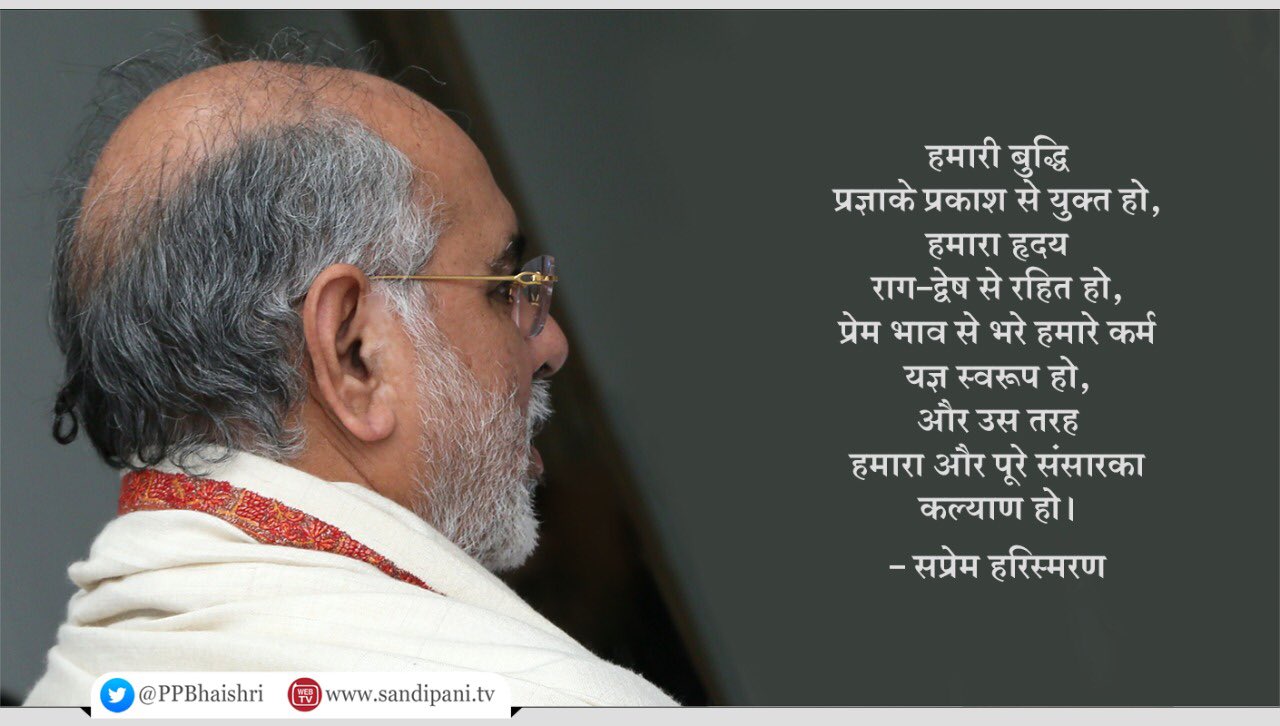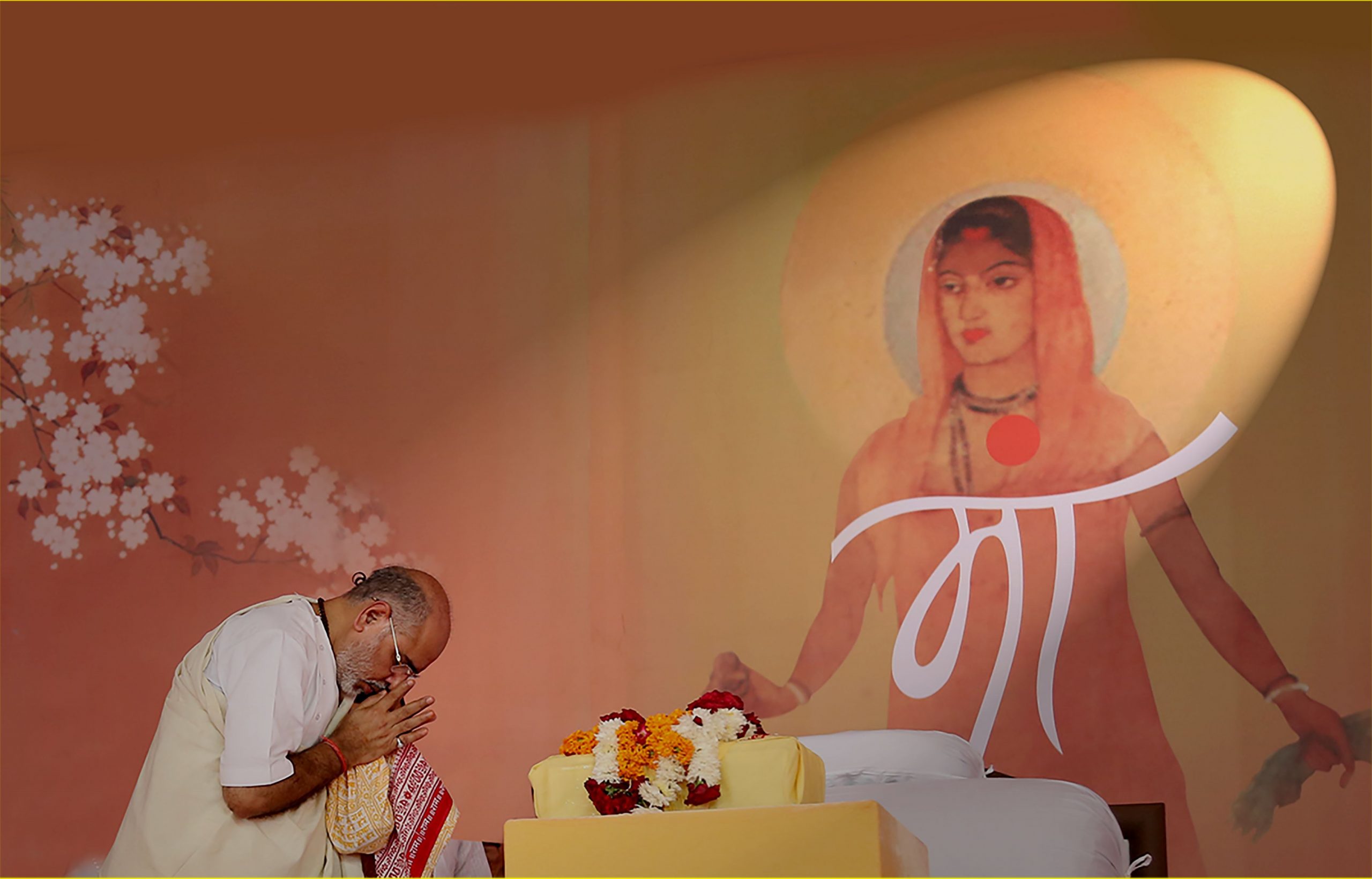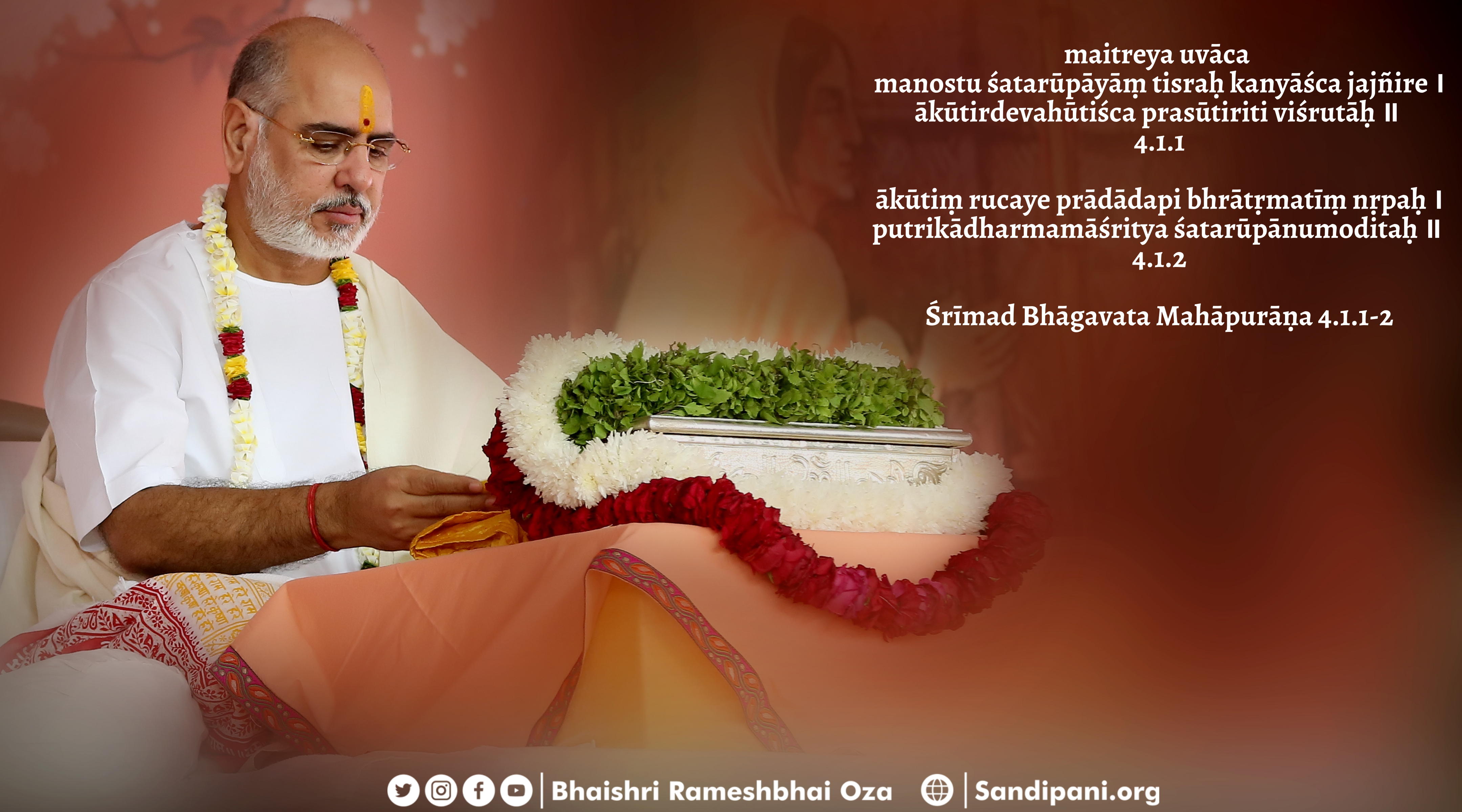Putrika Dharma
Yagya Bhagavan and Dakshina’s Marriage

‘May our intellect be illumined by the light of intelligence; May our heart be devoid of attachments and aversions; May our loving actions be the personification of Yagya; and in this way, may the entire world, and we ourselves, attain auspiciousness!
#Saprem_Harismaran’

Samādhi Bhāṣā – Lineage of Brahmāji’s son?
Pujya Bhaishri Rameshbhai Oza decrypts the samādhi bhāṣā (encrypted Truth) of the Śrīmad Bhāgavata Mahāpuraṇa though the lineage of Brahmāji’s son, Emperor Svayambhū Manu and his Queen Śatarūpā.
The Vedic principles of Dharma are codes of conduct by Ṛṣis who understand the science (of biology, sociology, psychology and more) that governs our gross and subtle existence.
Continuation of Lineages
To ensure human beings progress and succeed upon the journey of Life towards lasting happiness, Dharma consists of a code of conduct made up of dos and dont’s. Progeny ensure the continuation of a lineage, a value system, skills, and devotion. It is a form of Yagya performed by householders to satisfy their forefathers (Pitru Yagya) and a ‘putra’ saves his parents from the hell known as ‘Pum’
What is Putrikā Dharma?
There is a provision for parents who do not have sons to adopt the first-born son of their daughter, with the permission of her husband accorded at the time of marriage.
This is called ‘Putrikā Dharma’ and Manu Mahārāja both encoded it in his Manusṃṛti as well as practiced it himself for any law that has a precedent in place becomes easier to enforce and cite.
With the consent of his wife (as mandated by law), and then of his daughter and son-in-law, a father may adopt the son of his daughter into his own family gotra and line of work.
Ruci Ṛṣi agreed to give his son Yagya over to the King whilst raising his twin daughter Daskṣinā in his own Gotra.

Did-You-Know?
⚪ At the appropriate time Ruci Ṛṣi and Ākuti Devi married their daughter in Kanyādāna to Yagya Bhagavāna and she too became a member of Manu Mahāraja’s gotra. Their union is sanctified by the birth of twelve sons – all denoting the auspicious outcomes of a Dharmik Union of Yagya and Daskṣinā.
1. Toṣa
2. Pratoṣa
3. Santoṣa
4. Bhadra
5. Śānti
6. Iḍaspati
7. Idhma
8. Kavi
9. Vibhu
10. Svahna
11. Sudeva
12. Rocana
⚪ Whilst Princess Ākuti was born into this gotra, after marriage she belongs to the gotra of her husband Ruci Ṛṣi now.
⚪ Ākuti represents the potency of the five organs of action (karmendriya), namely:
1. Feet
2. Hands
3. Tongue
4. Genitals
5. Anus
⚪ Ruci Ṛṣi represents the inclination of a Ṛṣi which are:
oṃ sarve bhavantu sukhinaḥ
sarve santu nirāmayāḥ ।
sarve bhadrāṇi paśyantu
mā kaścidduḥkhabhāgbhavet ।
oṃ śāntiḥ śāntiḥ śāntiḥ ॥
1. May All be Happy,
2. May all be free of Illness,
3. May all see that which is Auspicious,
4. May no-one Suffer.
💥 Click–Here to Listen to more about ‘Shlok of the Week by
🔔 Share your thoughts in the comments section below……
#ShrimadBhagavat
#Mahatmya
#ShlokOfTheWeek
#SVN_SOW
#ScriptureOfLove
Series by:
Rishi Harshitbhai Shukla;
Nimishaben Sadhu (India);
Rajeshbhai Purohit (UK).
About this Article
This is a part of an ongoing series to learn a Shlok a week from the Purushottam Maas Shrimad Bhagavat Katha by Pujya Bhaishri Rameshbhai Oza.
We hope devotees are able to savour a few fun facts on these verses with an enhanced interest for the context and divine nuances through this series.
This Article is the 13th in the ‘Shlok of the Week’ Series.